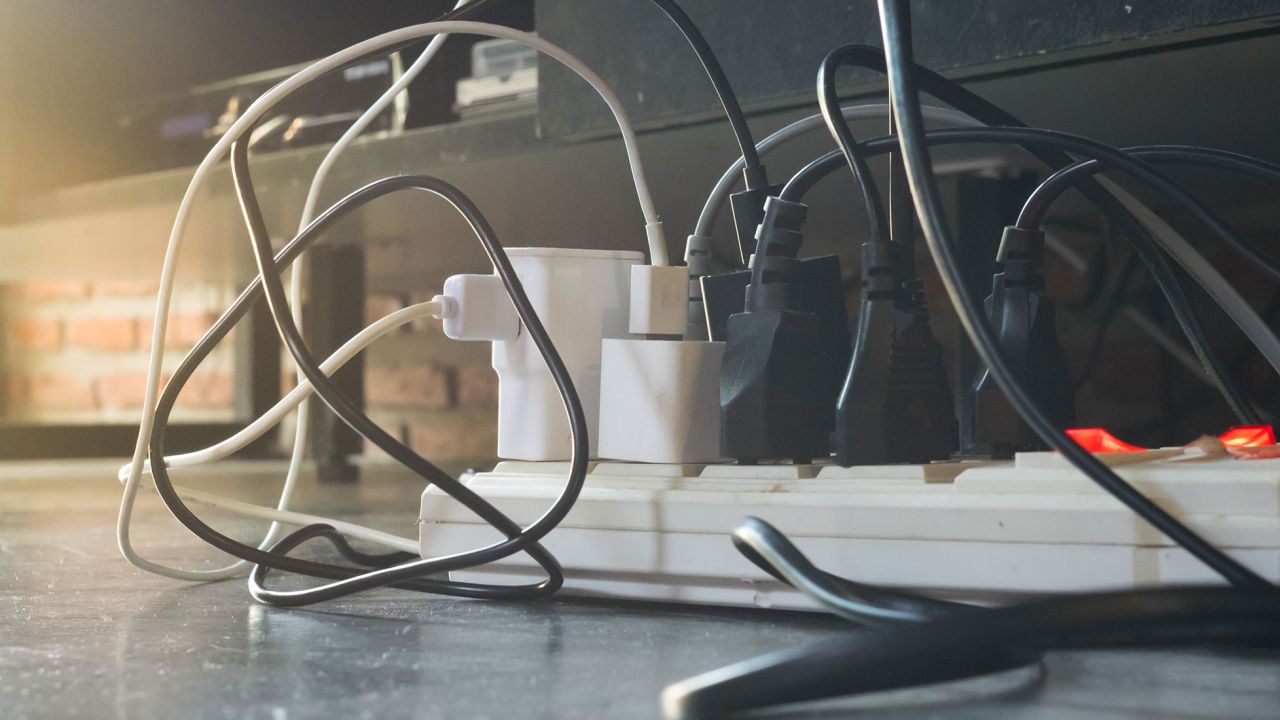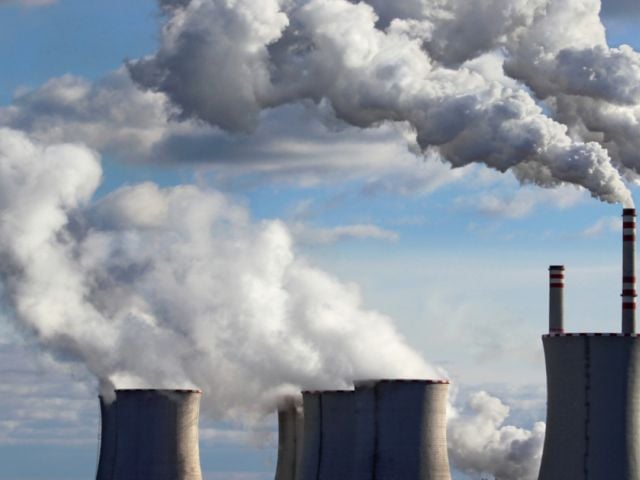
View and Download our report here: Unplugged
Hot Enough For You?
The summer of 1998 was the hottest on record, and that’s saying something. After all, the seven warmest years since scientists began keeping records in 1853 have all occurred in the past ten years, and 1997 was the warmest ever. So far, every month of 1998 has broken the temperature record for that month, and July 1998 was the single hottest month on record (NOAA 1998). To put it another way, we’ve probably just lived through the hottest seven-month period in 600 years.
Among scientists, there is a overwhelming consensus that this warming trend is at least partly the result of human activities such as electricity production, which annually spews billions of tons of greenhouse gases like carbon dioxide and other pollutants into the atmosphere.
In the face of these growing problems utilities should be working overtime to increase energy efficiency. But between 1993 and 1997, U.S. utilities cut their combined investment in energy-saving programs by 45 percent, or $736 million, largely in response to industry deregulation (Figure 1). After promising in the early 1990s to fund and even expand energy conservation programs for their customers, most utilities have done just the opposite (Table 1).
If utilities had funded energy efficiency programs in 1997 at the levels they promised five years earlier:
- The air would be cleaner. Utilities would have avoided emitting 11 million tons of global warming gases and 79,000 tons of air pollution in 1997 alone. Thanks largely to deregulation, utilities are increasingly turning to cheap power from older coalburning power plants in the Midwest to meet peak electricity demand. These huge power stations are mostly exempt from contemporary clean air standards, and they generate enormous amounts of air pollution including millions of tons of nitrous oxides, sulfur dioxide, and global warming gases. According to a recent analysis, the air quality was the worst when power shortages were the most prevalent (CAN/U.S. PIRG 1998). On June 25, 1998, the day many Midwestern utilities asked customers to cut their power usage, there were 110 violations of the new ozone air quality standard in 27 states and the District of Columbia.
- Consumers would save money. Americans would have saved $1 billion on electric bills in 1997. These savings would have continued every year for the next 10 to 15 years, a total of at least $10 billion in consumer savings lost due to cuts in energy efficiency programs by utilities, inspired largely by utility deregulation.
- Power would be available when people need it. With well-funded energy efficiency programs in place, utilities would very likely not have had to ask customers to turn down their air conditioners in the peak of the summer heat wave in June. This past summer, two utilities that slashed their energy efficiency spending, Commonwealth Edison of Chicago and American Electric Power 1 asked their customers to cut daytime power use during the peak of the summer heat wave in June. In Denver, Public Service of Colorado instituted a “rolling blackout” plan, and thousands of families were forced to endure the heat without any power at all.
Cuts in Energy Efficiency Programs are Big, and they Hurt Consumers
Since the October 1992 passage of the Energy Policy Act, the federal law that paved the way for the industry deregulation, utilities have cut investments in energy efficiency programs by 45 percent. In 1992, in disclosures required by the Department of Energy, utilities projected investing $2.4 billion on conservation in 1997. In fact, they spent only $894 million.
This means that actual spending on energy efficiency in 1997 was well less than half of one percent of the $276 billion in revenues reported by the utilities. Although the cost to the utilities of providing these energy-saving programs would have been minuscule compared to their revenues, fully funded efficiency programs would have saved customers $1 billion in 1997 (Table 2), and those investments would have continued to save customers money for the next 10 to 15 years.
Both American Electric Power (AEP) and Commonwealth Edison, utilities that asked customers to turn off their air conditioners to avoid blackouts this summer, cut their investments in energy efficiency in 1997. Commonwealth Edison cut its program entirely, as did every AEP operating company except Columbus Southern. In fact, AEP paid its president and CEO, Linn Draper, four times more in 1997 ($2 million) than its ten operating companies combined spent on energy efficiency in the same year ($500,000) (AEP 1997).
The efficiency programs that utilities cut range from home energy efficiency audits and other forms of consumer education to rebates (or low-interest loans) for the purchase of new products such as efficient water heaters, lights, shower heads, air conditioners, and heat pumps. Many of these programs save customers substantial amounts of money.
Simple efforts like replacing ordinary incandescent light bulbs with compact fluorescent bulbs that use one-quarter the energy can save customers $50 per bulb over the life of the bulb. If every household in America replaced just one ordinary bulb in this way, carbon dioxide emissions could be reduced by nearly 5 million tons a year. Replacing old refrigerators can also provide easy savings. The Chicago Housing Authority replaced old refrigerators with new, more efficient units, and will save more than $500,000 on its electric bill in 1998. Home weatherization programs often produce savings in excess of 25 percent. For example, the Department of Energy’s Weatherization Assistance Program saves customers an average of $193 per dwelling annually and returns $1.80 per dollar invested.
Cutting energy efficiency keeps electric bills unnecessarily high and forces utilities to generate more power to serve inefficient homes and businesses. Inefficient use of power also means that less power is available when people really need it, during summertime heat waves. As the global warming trend continues, we need to invest more in energy efficiency, not less. Global warming will not only change the weather and damage agriculture and natural habitats, but may also exacerbate the health effects of air pollution. Hotter summers may result in increased smog formation and more build-up of pollutants in urban air masses during heat waves. No one benefits from energy efficiency cuts.
Deregulation Has Driven Cuts in Energy Efficiency Programs
Few people realize that the power that utilities buy from each other is already deregulated. This is known in the industry as “wholesale” deregulation. Congress and the states, meanwhile, are struggling to deregulate the decades-old system by which power utilities sell electricity to their customers — the “retail” end of the electricity industry. While it is highly unlikely that any legislation will pass Congress this year, 13 states have already passed laws and four states have issued commission orders that deregulate their electric industries.
This movement toward the deregulation of the retail power market has led to cuts in energy efficiency programs. Some utilities have explicitly stated in their filings with the Department of Energy that they have cut their energy efficiency programs to prepare for the deregulation of the electricity market. For example, two of Allegheny Power System’s four operating companies, Monongahela Power, which serves Ohio and West Virginia, and West Penn Power, stated in their DOE filing that they were canceling their energy efficiency programs because of increased competition in the industry. American Electric Power said it was trimming its demandside management programs in anticipation of the emerging competitive market. Other utilities, like Georgia Power, claim that they are cutting these programs because they have determined that they are not costeffective in a deregulated market.
In the past, through a combination of market forces and progressive regulation, some utilities had an incentive to promote energy efficiency. Because most state regulators allowed utilities to purchase power only in special circumstances and not as a day-to-day method of supplying their customers, the cost of energy efficiency was balanced against the high cost of building new power plants. Energy efficiency programs helped utilities avoid the costs of new construction, and many utilities were refunded with interest for their investment in energy efficiency programs just as they would have been for a new power plant. In the process, consumers saved money and reduced pollution.
Now, due to wholesale power deregulation, utilities no longer compare energy efficiency programs to the costs of new plants. In looking for the cheapest way to meet peaks in demand for power, utilities now compare the cost of energy efficiency programs to the cost of wholesale power. In effect, where they once “paid” customers to use less power, now they can just buy power on the wholesale market.
In this new cost equation, energy efficiency programs are typically the losers. And in the electricity “price wars” that are expected as fully deregulated utilities compete for customers, energy conservation services and the mechanisms that fund them are even more likely to be eliminated. The ultimate loser is the customer, who loses both the savings and the environmental benefits of energy efficiency.
Since 1993, energy efficiency investments at 52 electric utilities with revenues over $1 billion shrank to less than half of one percent of their total revenues (Table 3). Thirty-eight other large utilities have cut their investment by over 50 percent (Table 4), and 42 have eliminated investments in energy efficiency programs altogether (Table 5).
Even some of the top investors in energy efficiency have cut their energy efficiency programs significantly. In California, the Sacramento Municipal Utility District, which spent 2.4 percent of its revenue on energy efficiency in 1997, cut its funding from $38 million in 1995 to $17 million in 1997. San Francisco-based Pacific Gas & Electric, which invested more than any utility on energy efficiency in 1997, cut its funding from nearly $125 million in 1994 to $81 million in 1997 (Table 6).
View and Download our report here: Unplugged
